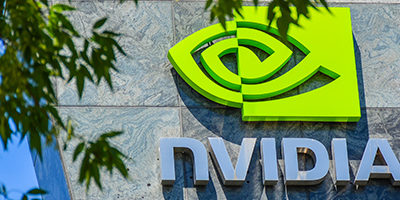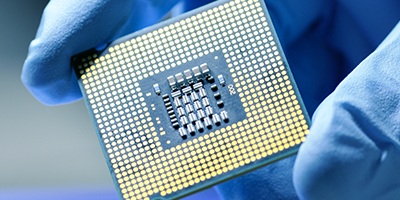%
Jubak’s Picks Performance 1997-2019
Jubak’s Picks
Buy and hold? Not really.
Short-term trading?
Not by a long shot.
So what is the stock-picking style of The Jubak’s Picks portfolio?
Click to expand...
Click to View the Jubak’s Picks Portfolio
I try to go with the market’s momentum when the trend is strong and the risk isn’t too high, and I go against the herd when the bulls have turned piggy and the bears have lost all perspective. What are the results of this moderately active — the holding period is 12 to 18 months — all-stock portfolio since inception in May 1997? A total return of 584% as of December 31, 2019. That compares to a total return on the S&P 500 stock index of 335% during the same period.
%
Top 50 Stocks Performance 2019
Top 50 Stocks
This long-term, buy-and-holdish portfolio was originally based on my 2008 book The Jubak Picks.
Trends that are strong enough, global enough, and long-lasting enough to surpass stock market averages.
Click to expand...
Click to view the Top 50 Stocks Portfolio
In The Jubak’s Picks Portfolio I identified ten trends that were strong enough, global enough, and long-lasting enough to give anyone who invested in them a good chance of beating the stock market averages.
To mark the publication of my new book on volatility, Juggling with Knives, and to bring the existing long-term picks portfolio into line with what I learned in writing that book and my best new ideas on how to invest for the long-term in a period of high volatility, I’m completely overhauling the existing Top 50 Picks portfolio.
You can buy Juggling with Knives at bit.ly/jugglingwithknives
%
Dividend Income Performance 2021
Dividend Income
Every income investor needs a healthy dose of dividend stocks.
Why bother?
Why not just concentrate on bonds or CDs?
Click to expand...
Click to view the Dividend Income Portfolio
Because all the different income-producing assets available to income investors have characteristics that make them suited to one market and not another. You need all of these types of assets if you’re going to generate maximum income with minimum risk as the market twists and turns.
For example: bonds are great when interest rates are falling. Buy early in that kind of market and you can just sit back and collect that initial high yield as well as the capital gains that are generated as the bonds appreciate in price with each drop in interest rates.
CDs, on the other hand, are a great way to lock in a yield with almost absolute safety when you’d like to avoid the risk of having to reinvest in an uncertain market or when interest rates are crashing.
Dividend stocks have one very special characteristic that sets them apart from bonds and CDs: companies raise dividends over time. Some companies raise them significantly from one quarter or year to the next. That makes a dividend-paying stock one of the best sources of income when interest rates start to rise.
Bonds will get killed in that environment because bond prices will fall so that yields on existing bonds keep pace with rising interest rates.
But because interest rates usually go up during periods when the economy is cooking, there’s a very good chance that the company you own will be seeing rising profits. And that it will raise its dividend payout to share some of that with shareholders.
With a dividend stock you’ve got a chance that the yield you’re collecting will keep up with rising market interest rates.
But wouldn’t ya know it?
Just when dividend investing is getting to be more important—becoming in my opinion the key stock market strategy for the current market environment—it’s also getting to be more difficult to execute with shifting tax rates and special dividends distorting the reported yield on many stocks.
I think there’s really only one real choice—investors have to pull up their socks and work even harder at their dividend investing strategy. That’s why I revamped the format of the Dividend Income portfolio that I’ve been running since October 2009. The changes aren’t to the basic strategy. That’s worked well, I think, and I’ll give you some numbers later on so you can judge for yourself. No, the changes are designed to do two things: First, to let you and me track the performance of the portfolio more comprehensively and more easily compare it to the performance turned in by other strategies, and second, to generate a bigger and more frequent roster of dividend picks so that readers, especially readers who suddenly have a need to put more money to work in a dividend strategy, have more dividend choices to work with.
Why is dividend investing so important in this environment? I’ve laid out the reasons elsewhere but let me recapitulate here. Volatility will create repeated opportunities to capture yields of 5%–the “new normal” and “paranormal” target rate of return–or more as stock prices fall in the latest panic. By using that 5% dividend yield as a target for buys (and sells) dividend investors will avoid the worst of buying high (yields won’t justify the buy) and selling low (yields will argue that this is a time to buy.) And unlike bond payouts, which are fixed by coupon, stock dividends can rise with time, giving investors some protection against inflation.
The challenge in dividend investing during this period is using dividend yield as a guide to buying and selling without becoming totally and exclusively focused on yield. What continues to matter most is total return. A 5% yield can get wiped out very easily by a relatively small drop in share price.
Going forward, I will continue to report on the cash thrown off by the portfolio—since I recognize that many investors are looking for ways to increase their current cash incomes. But I’m also going to report the total return on the portfolio—so you can compare this performance to other alternatives—and I’m going to assume that an investor will reinvest the cash from these dividend stocks back into other dividend stocks. That will give the portfolio—and investors who follow it—the advantage of compounding over time, one of the biggest strengths in any dividend income strategy.
What are some of the numbers on this portfolio? $29,477 in dividends received from October 2009 through December 31, 2013. On the original $100,000 investment in October 2009 that comes to a 29.5% payout on that initial investment over a period of 39 months. That’s a compound annual growth rate of 8.27%.
And since we care about total return, how about capital gains or losses from the portfolio? The total equity price value of the portfolio came to $119,958 on December 31, 2012. That’s a gain of $19,958 over 39 months on that initial $100,000 investment or a compound annual growth rate of 5.76%.
The total return on the portfolio for that period comes to $49,435 or a compound annual growth rate of 13.2%.
How does that compare to the total return on the Standard & Poor’s 500 Stock Index for that 39-month period? In that period $100,000 invested in the S&P 500 would have grown to $141,468 with price appreciation and dividends included.) That’s a total compounded annual rate of return of 11.26%.
That’s an annual 2 percentage point advantage to my Dividend Income portfolio. That’s significant, I’d argue, in the context of a low risk strategy.
Portfolio Related Posts
Please watch my YouTube video: Quick Pick Goldman Sachs
Today’s Quick Pick is Goldman Sachs (GS). This is not a cheap stock. Goldman has had a good run in 2024 and is up 55% year to date. But this is the stock to use play the financial deregulation policies of the Trump administration. We’re moving from Biden’s administration that had a relatively high degree of scrutiny in merger and acquisition deals to an administration that will come close to approving any deal Wall Street proposes. The deal pipeline is full. Companies that were waiting on the election results to move deals forward will start the process as soon as the new President is inaugurated. Running an M&A deal is incredibly lucrative for an investment bank. Goldman Sachs is a big player in this market and will benefit from doing M&As and LBOs. This pick is how I’ll be playing the Trump financial deregulation and I’ll be adding it to my Jubak Picks portfolio tomorrow.
Watch my YouTube video: Quick Pick Fortinet
Today’s Quick Pick is Fortinet (FTNT). Fortinet is a cybersecurity company with a concentration in firewalls. They have about 15% of the firewall market. Firewall sales have a four or five year cycle as technology develops and companies need to upgrade their security. Morgan Stanley recently predicted the firewall replacement cycle is likely to begin in the second half of 2025. Fortinet is currently at a 20% discount to Palo Alto Networks, the leader in the cyber security stock sector. FTNT is profitable (GAAP and non-GAAP) with their non-GAAP earnings from the second quarter of 2024 showing 35% profitability. Morningstar predicts operating margins will grow to 38%-40% by 2028. I’ll be adding this to my Jubak Picks portfolio with an eye to 2025.
Today I added VMC as the third pick to my Special Report “10 new stock ideas for an old rally” on my subscription site
Here’s what I wrote today when I added Vulcan Materials to my Special Report “10 new stock ideas for a old rally” on my JubakAM.com subscription site
Think about gold and gold miners as two different asset classes right now
I think you want to own gold–through something like the SPDR Gold Shares ETF (GLD) right now to profit from decreasing interest rates at most of the world’s central banks, from global macro uncertainty, from the possibility of domestic violence in the United States around the election, and from what sure looks like a train wreck in U.S. fiscal policy.In the short term. Say six to nine months–maybe even a year–from now. The SPDR Gold Shares ETF is up 24.84% for 2024 as of the September 16 close. In that same time period I think shares of gold mining companies are likely to lag the gains in gold. Shares of Barrack Gold (GOLD), the world’s second largest gold producer, are up just 15.09% in 2024.
Nvidia to replace Intel in Dow Jones industrials Average–another catalyst for shares
AI chipmaker Nvidia (NVDA) will join the Dow Jones Industrial Average, replacing chipmaker Intel (INTC), S&P Dow Jones Indices, the owAI chipmaker Nvidia (NVDA) will join the Dow Jones Industrial Average, replacing chipmaker Intel (INTC), S&P Dow Jones Indices, the owner of the 127-year-old index, said late Friday.
A new pick–TSM–for my Special Report “10 Trump and 10 Harris winners” on my subscription site
Last night I added a third potential Harris election victory winner to my Special Report “10 trump and 10 Harris winners” on my subscription JubakAM.com site. Here’s what I wrote about Taiwan Semiconductor Manufacturing (TSM) in that post.
China fires the big bazooka again–a sign of a panic?
There was a whiff of panic to the big moves by the People’s Bank today.China’s central bank cut a key short-term interest rate and announced plans to reduce the reserve ratio, the amount of money banks must hold in reserve, to the lowest level since at least 2018. This marked the first time reductions to both measures were revealed on the same day since at least 2015. And that wasn’t all.
So what happened to the big market crash?
I think of Nvidia (NVDA) as this market’s warning indicator; it’s the canary in a coal mine; the bird that will die first if dangerous gases start to build up. So, yes, it’s important that Nvidia shares plunged from $134.91 on July 10 to $98.91 on August 7. And again from $128.83 on August 28 to $102.83 on September 6. But the shares are up again–15.83% last week–to $116.78 This canary seems to be sending a rather more complicated message than “Look I’m dead! See my feet in the air?” What’s the message, though?










